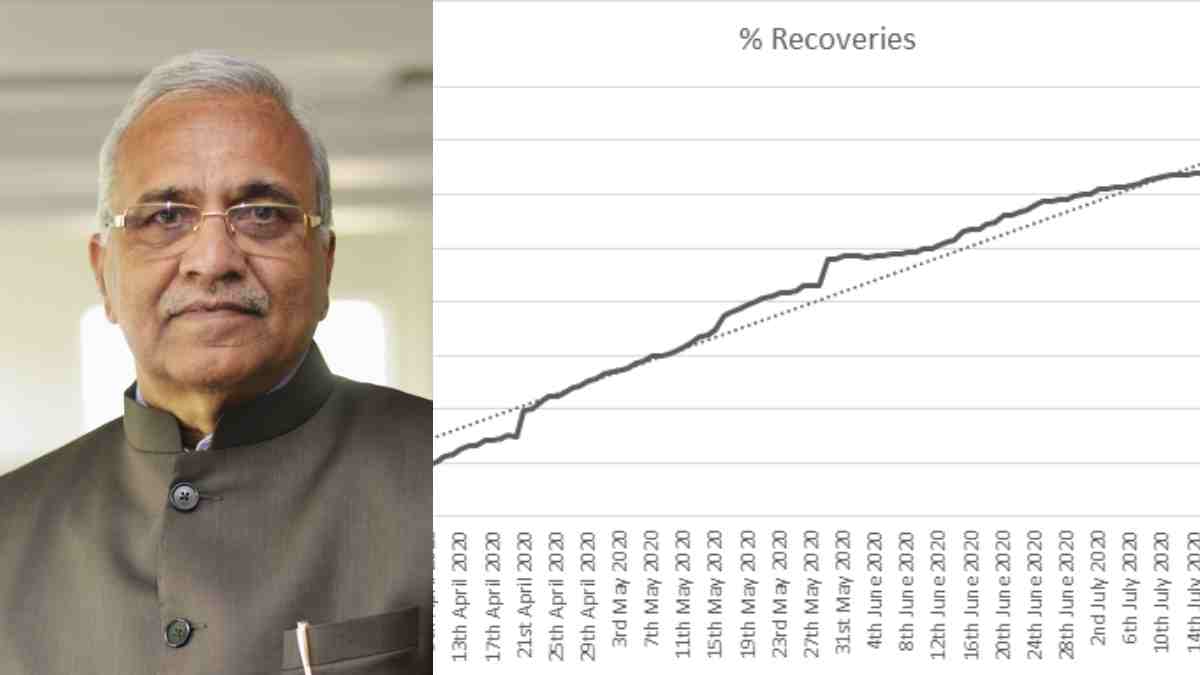


Covid-19 cases are still increasing in India. It has crossed the 2 million mark and the highest number of cases recorded in a single day stands at 60,000 currently. But concerns still remain about the transmission of the virus and flattening the curve. The Daily Guardian brings an interview with Dr Girdhar Gyani, the founder of the Association of Healthcare Providers of India and the convenor of a taskforce on Covid-19 hospitals.

Q. When do you think the curve will start to flatten in India? What about Delhi and Mumbai?
A. The recovery rate has been increasing rapidly as can be seen from the data received. A daily trend is shown below. As this trend increases to 70-75%, the curve will begin flattening by mid-August according to an early estimate. The cities of New Delhi and Mumbai bear testimony to the fact that if recovery rates rise beyond 75%, the curve begins to flatten rapidly. The Recovery Percentage for Delhi stands at 90% (the highest in the country) and Mumbai stands at 74%.
Q. What are the stages which define transmission of infection? Do you think India is now in Stage Three?
A. Since its identification as a case of respiratory infection in Wuhan in December 2019, the novel coronavirus (SARSCoV-2) disease or Covid-19 has spread like wildfire and has affected more than 10 million people worldwide across 210 countries, with deaths topping 500,000 as cases continue to rise in a number of hotspots. Hence, WHO declared Covid-19 a pandemic in the month of March 2020 as it had reached almost every corner of the world. Speaking about the spread of a disease among humans, the term transmission refers to the transmission of microorganisms from one infected individual to an uninfected person, either through direct contact, through droplets, or through indirect contact such as surface contamination. The novel coronavirus has four stages of transmission — in line with other infectious diseases.
Stage 1: It is the first appearance of the disease through people with a travel history. With everyone contained, their sources traced and no local spread from those infected, transmission would be quite low at this stage.
Stage 2: Local transmission: when those who were infected and have a travel history spread the virus to close friends or family. At this stage, every person who came in contact with the infected can be traced and isolated.
Stage 3: Community transmission: when infections happen in public and a source for the virus cannot be traced. At this stage, large geographical lockdowns become important as random members of the community start developing the disease.
STAGE 4: The disease actually becomes an epidemic in a country, such as it was in China, with large numbers of infections and a growing number of deaths with no end in sight. It is then considered to be endemic or now prevalent in the region.
Q. At which stage of an epidemic does the curve start to flatten?
A. Generally, the epidemic curve starts to rise sharply during the third phase, also known as community transmission. But it mostly reaches its peak during the fourth stage. However, with appropriate prevention measures, the curve could be flattened at Stage 3 so that it does not move to stage 4.
